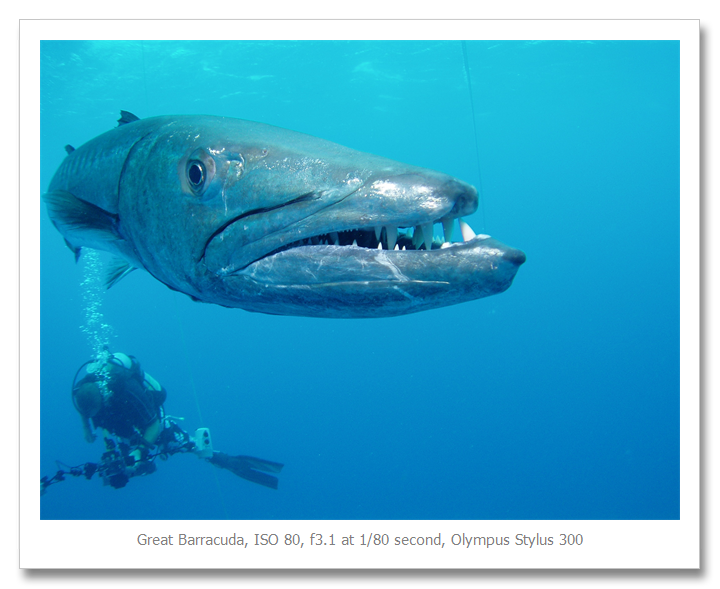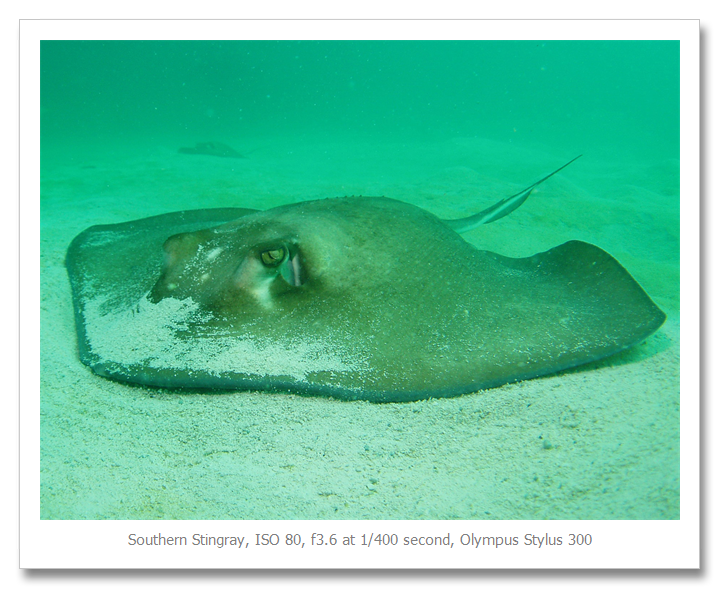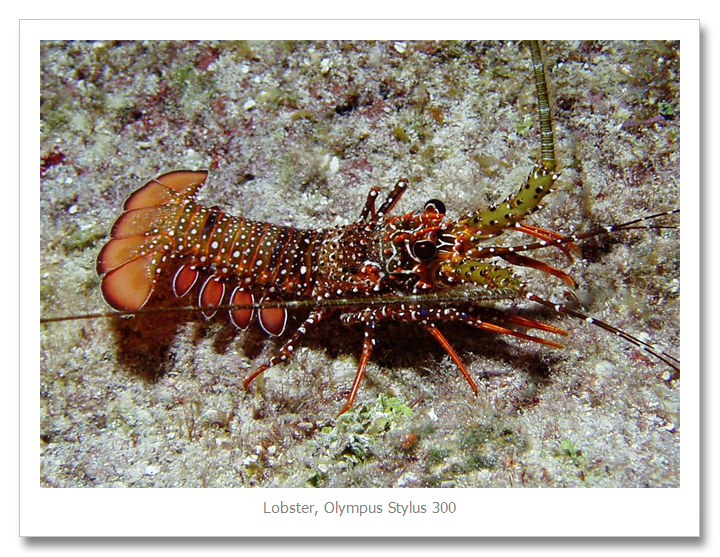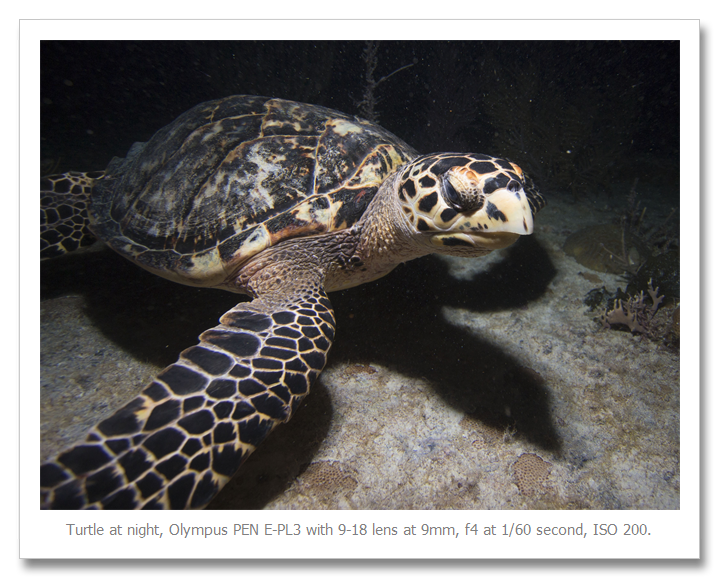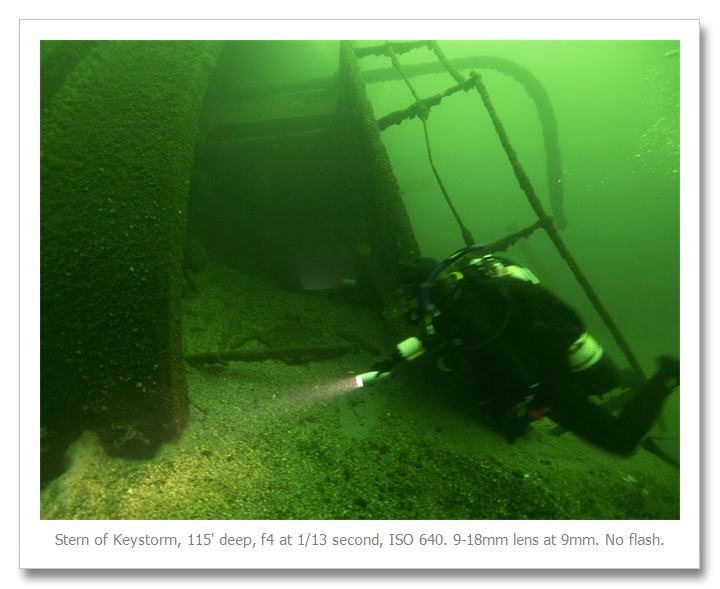I was doing a presentation a few weeks back for the New York Sea Gypsies dive club when I was asked a question about choosing an underwater camera system. The question was “should I buy a housing for my digital SLR?” In the days of film, that was an easy question to answer as there were limited choices in housings and in cameras that fit the housings. That has all changed with the digital revolution. Now you would be hard pressed not to find a housing for your camera. So the question remains, “should I buy a housing for my digital SLR?”
I suppose that I would now answer that question with “Maybe!” Now that is an ambiguous answer if I ever gave one. I think that if I was looking to get into underwater photography and owned a Nikon D300 like I do now, I am not sure that housing it would be my choice. Here are some things to think about when you are considering an underwater camera system:
- Where will I use it? At home or when traveling.
- If I use it at home, how often will I use it?
- If I use it while traveling, how often will I travel?
- If I travel, will the size of the system restrict my baggage requirements?
- Will my photographs be used commercially or just for pleasure?
- Will I print my photos or just show them on the web, computer and tv?
- What is my budget?
Let’s look at the reasoning behind some of these questions:
Scenario 1-House an Existing Camera:I have a Nikon D300 and want to house it for underwater use. The least expensive alternative is to purchase an Ikelite housing. Least expensive does not mean a terrible product. Ikelite makes a great housing that will suit the needs (and pockets) of many. This will set me back around $1400-$1500 USD. I will need ports for at least two different lenses like the Tokina 10-17mm fisheye zoom and the Nikon 60mm macro lens. If I don’t own either lens, I will need to purchase the lenses and associated ports.

That will set me back another $2000. I will need at least one underwater strobe. If I stay with Ikelite, I will buy an Ikelite DS-160 or DS-161 (if I want to do video later). The strobe with synch cord will be another $1150. My investment is now up to $4650.00 without the cost of the camera body. If I add a second strobe, my investment is $5800. If my budget can stand it and I am going to do most of my shooting close to home, this is a good choice. Suppose that I will travel to do my shooting rather than doing it close to home. How will the bulk of my system affect my baggage allowances. These are becoming more-and-more of a major concern. If I am traveling with a family, the bulk makes the baggage situation even more annoying.
Scenario 2-Travel Only: I am only going to photograph when I travel and my travel will be limited to one trip a year. Should I house my digital SLR? This one could go either way. I suppose the answer would depend on budget considerations. As an alternative to housing a digital SLR, how about buying a point-and-shoot camera with a housing and a small strobe. I have seen some amazing results with this type of system. Since I have very little experience in this venue, I decided to use the experience of my good friend, Chris Bain of Somerset, New Jersey. Chris has a very good eye when it comes to composing images and his first system was a point-and-shoot system. Here are his comments on his first system:

3.2 mega pixel Olympus Stylus 300 in an Olympus housing with wet mount Inon wide angle and macro lens attachments. The “package” is compact so I selected an Inon D-2000 strobe because it is also compact and received good reviews.
The good: Compact, thus good for travel. The camera has taken photos good enough to win competitions over SLRs. Inexpensive.
The challenges: Slow to power up and significant shutter delay. Fish movements needed to be anticipated to capture the image. This was especially difficult for fish with fast, sudden movement such as Sergeant Majors.
Here are some examples of photos from this system:
This system was inexpensive (as underwater camera systems go) and was a great starter system for Chris but he found that he wanted more. Chris photographs in the waters off New Jersey, Florida, in the Great Lakes and on dive vacations to various locations around the world so he needed a system that was easy to travel with.
He decided that he did not want the bulk of a housed digital SLR so he looked in a different direction. I think that it is a direction that many traveling underwater photographers should consider. It will not be right for everyone but I think that it will be right for many. Here are Chris’s thoughts about his new system:
 Olympus PEN E-PL3 in a Nauticam housing. Added a second Inon D-2000 strobe.
Olympus PEN E-PL3 in a Nauticam housing. Added a second Inon D-2000 strobe.
The good: Larger than a point and shoot but smaller than an SLR thus still compact and good for travel. Compact interchangeable lenses. I consider them to be smaller than the competition. Good choice of lenses. I really like the 9-18mm zoom (which is equivalent to a 18-36mm zoom for a 35mm camera). It’s fast to power up and shutter lag is small. The ergonomics of the housing are great plus the housing is reasonably compact.
The challenges: I haven’t found any significant issues so far. The camera itself is not too expensive. However, the price mounts when a wide angle lens, housing, and port are added. The acrylic dome port is easy to scratch though there are products available to polish out the scratches.
Let’s look at an example of costs. The Olympus PEN E-PL3 camera is around $600 USD. The Nauticam housing adds $1650 without ports. The 9-18 zoom lens is $645 and the Nauticam port for this lens is $499.00 and two Inon D-2000 strobes are $689 each. This totals out at $4772. This is a lot of money but when you compare it to housing a digital SLR and adding two strobes in my example at the start of this blog is $5800 without the camera body.
Here is a photo taken by Chris with his new system:
The next photo was taken in the St. Lawrence River of the stern of the S.S. Keystorm at a depth of 115’ with no flash.
If I were to look at a new system right now, I might consider the Olympus OM-D EM5. It is one of Olympus’ newest offerings. It is about the same size as Chris’ system but I personally like it over the PEN E-PL3. Cost wise, it will be a little more expensive than the PL3. I would venture to guess that either of these systems are half the size of my Nikon D300 camera in a Subal housing.
Rather than go into detail about the OM-D EM5, follow this link to a great review by Alex Mustard, one of the world’s leading underwater photographers. His review uses the Olympus housing and shows some comparisons in camera size between the EM5 and a digital SLR. Personally, I would purchase the system with the Nauticam housing as all reviews that I have read about it shows it to outshine the Olympus housing with very little difference in cost.
I truly believe that the old school thinking of housing what you own is not necessarily true for the exciting world of digital photography. You really need to assess your needs to decide the correct path for your underwater photography equipment.
I would like to thank Chris Bain for his thoughts and images.
© 2012, Herb Segars. All rights reserved.

